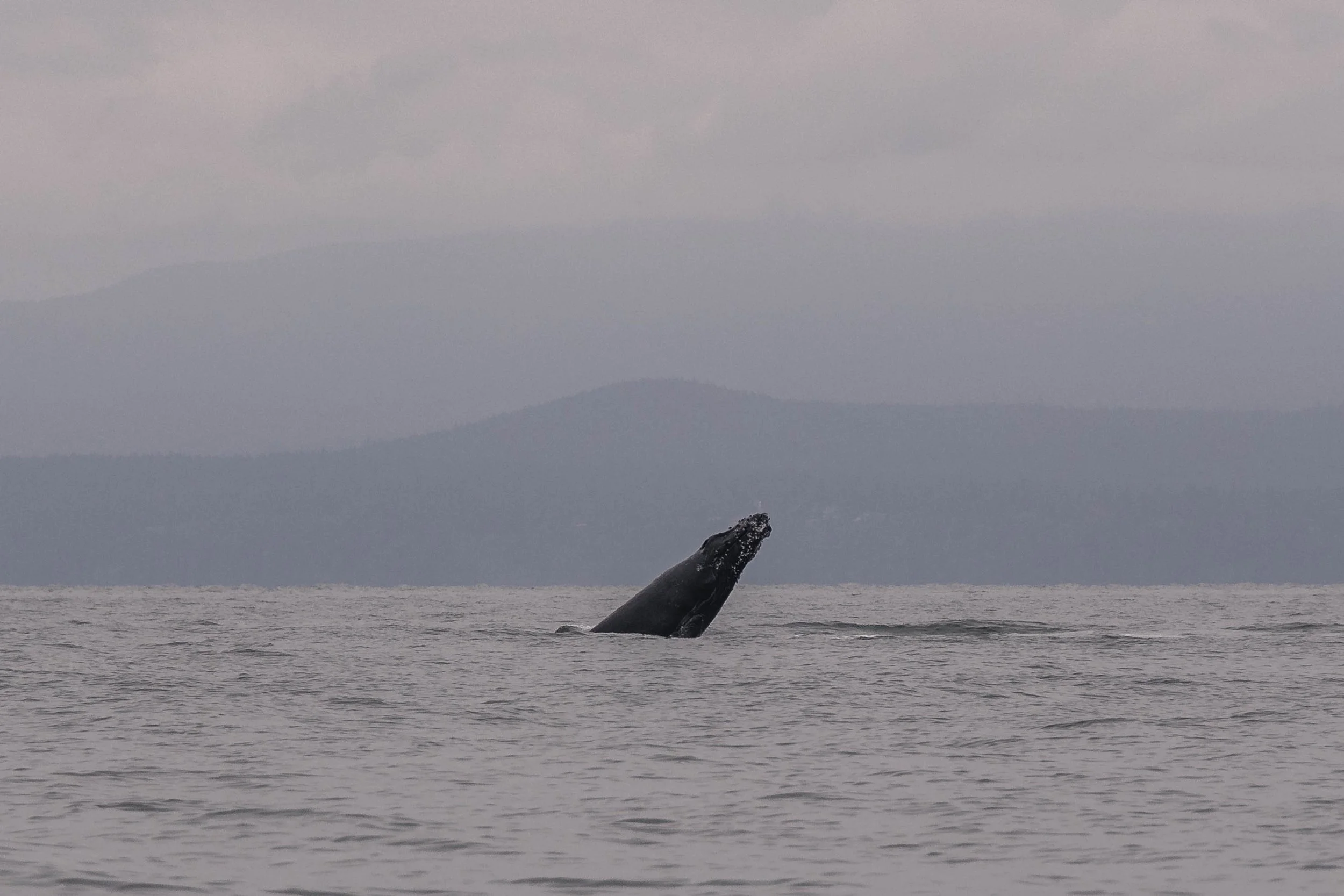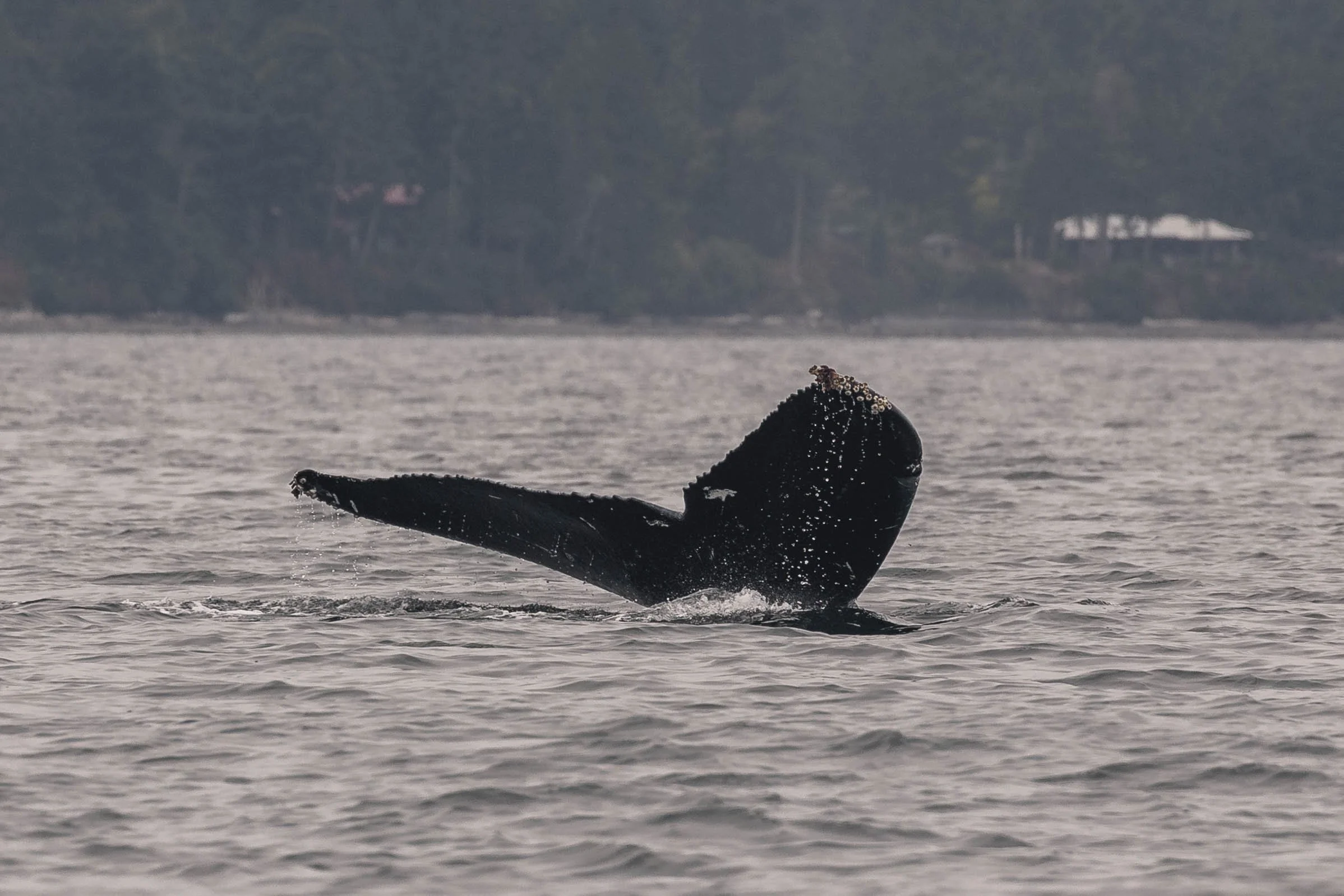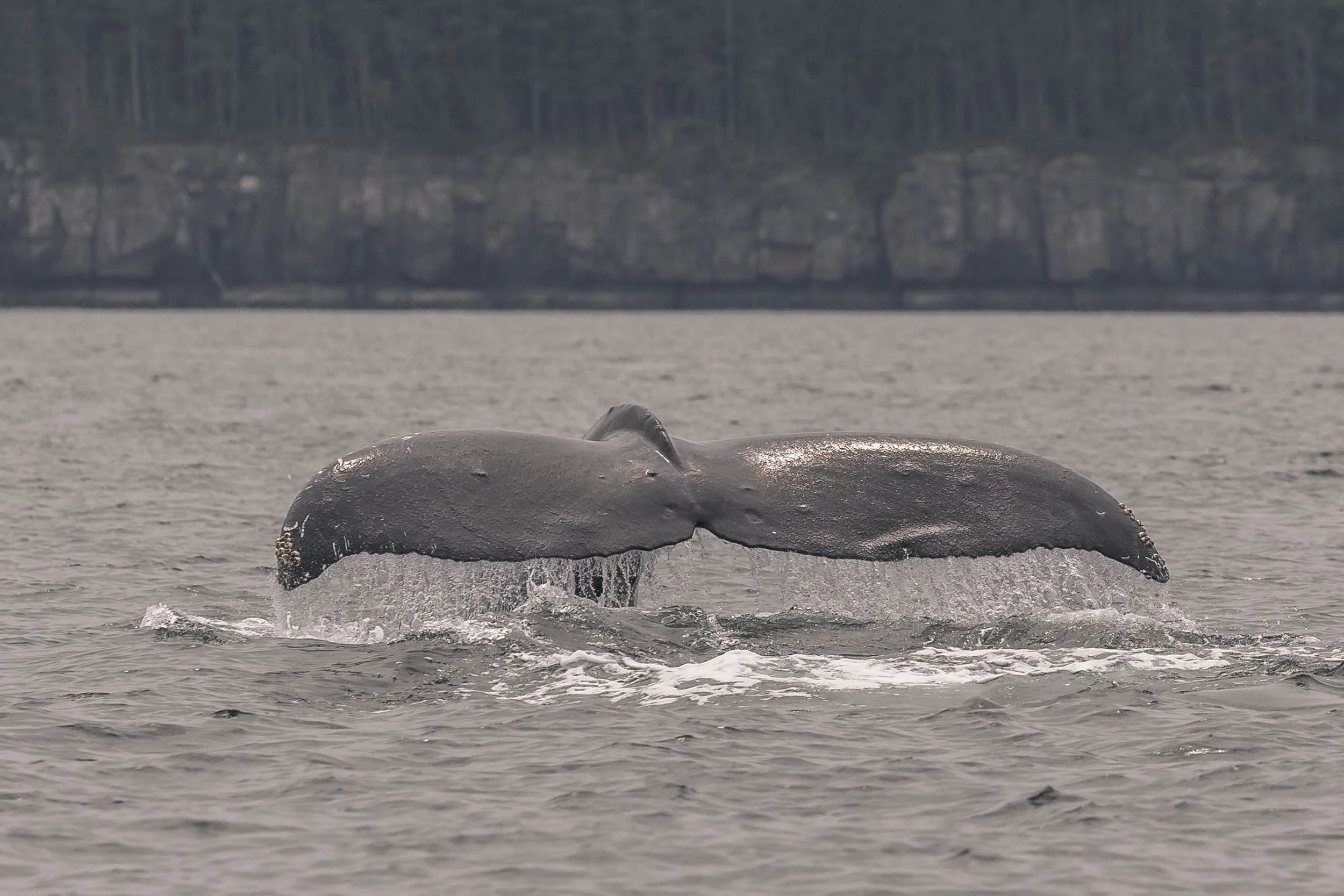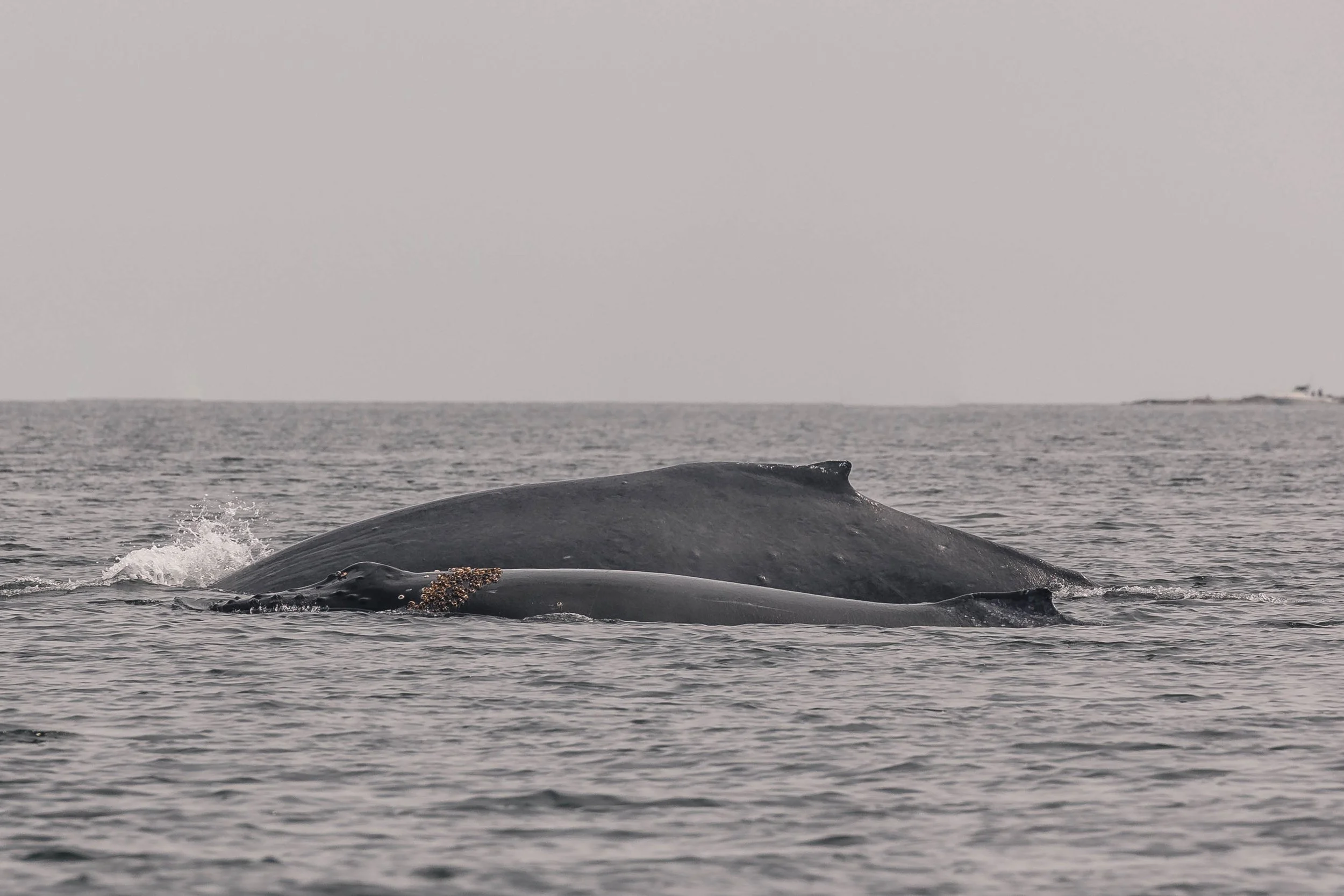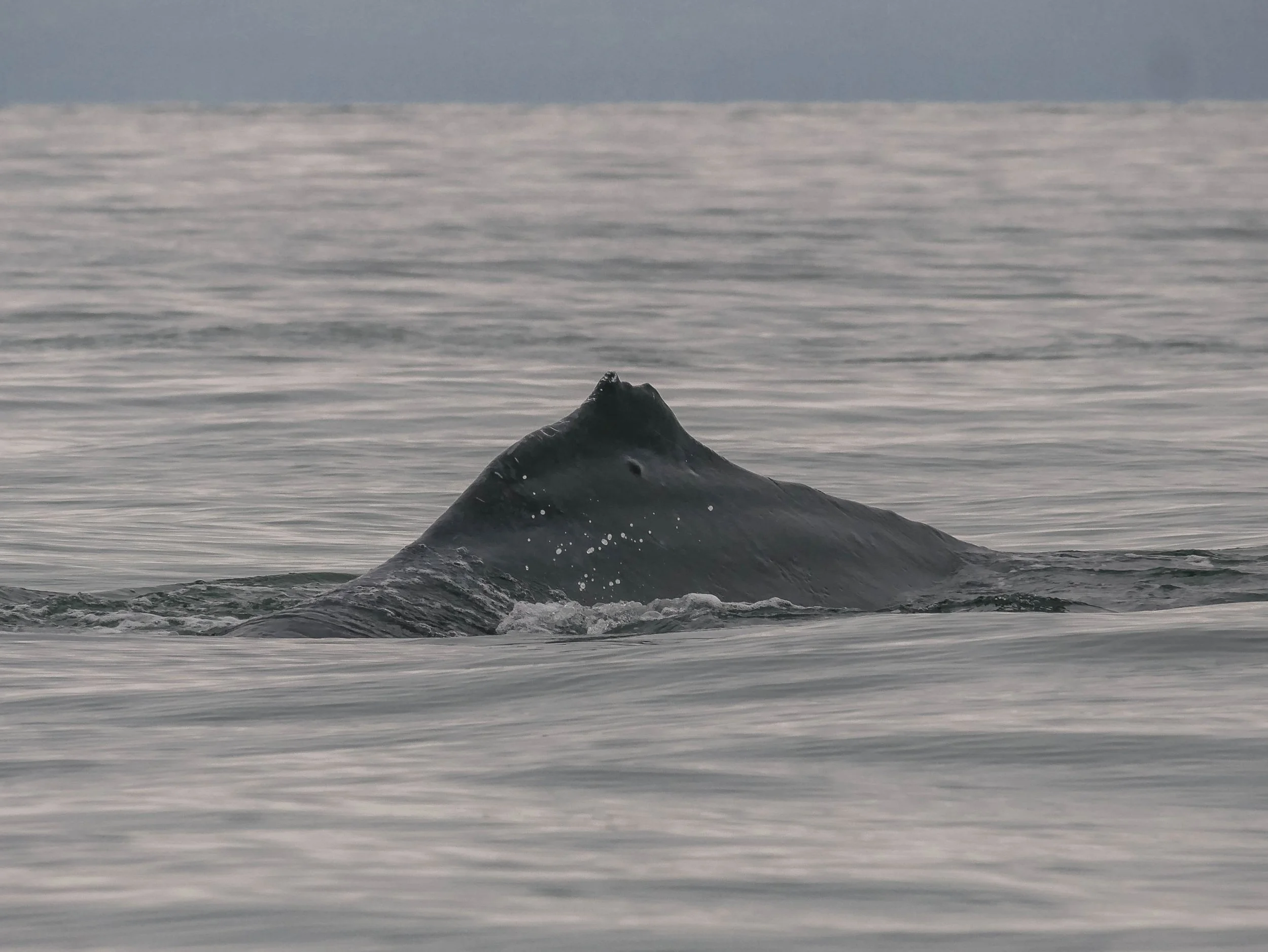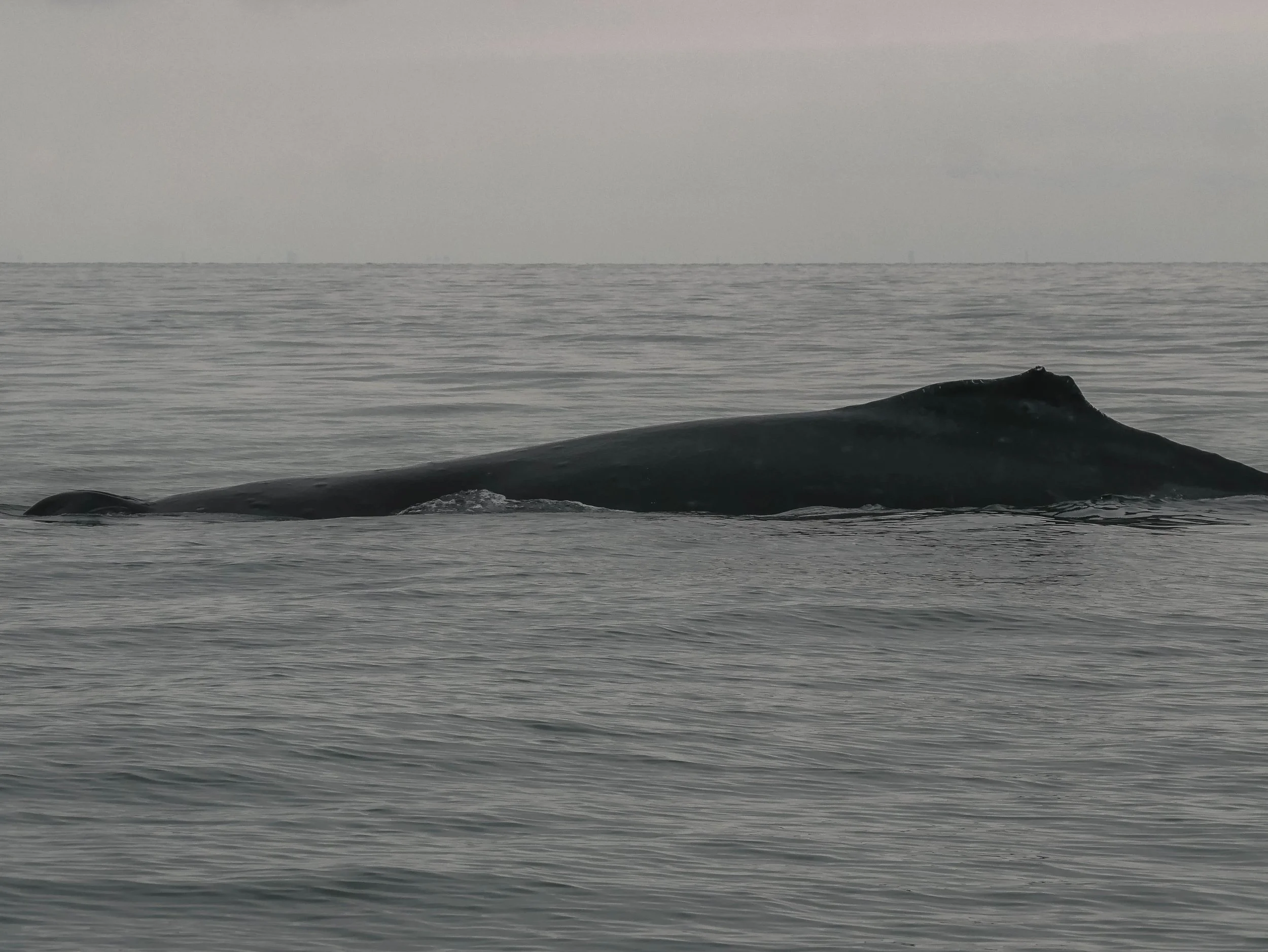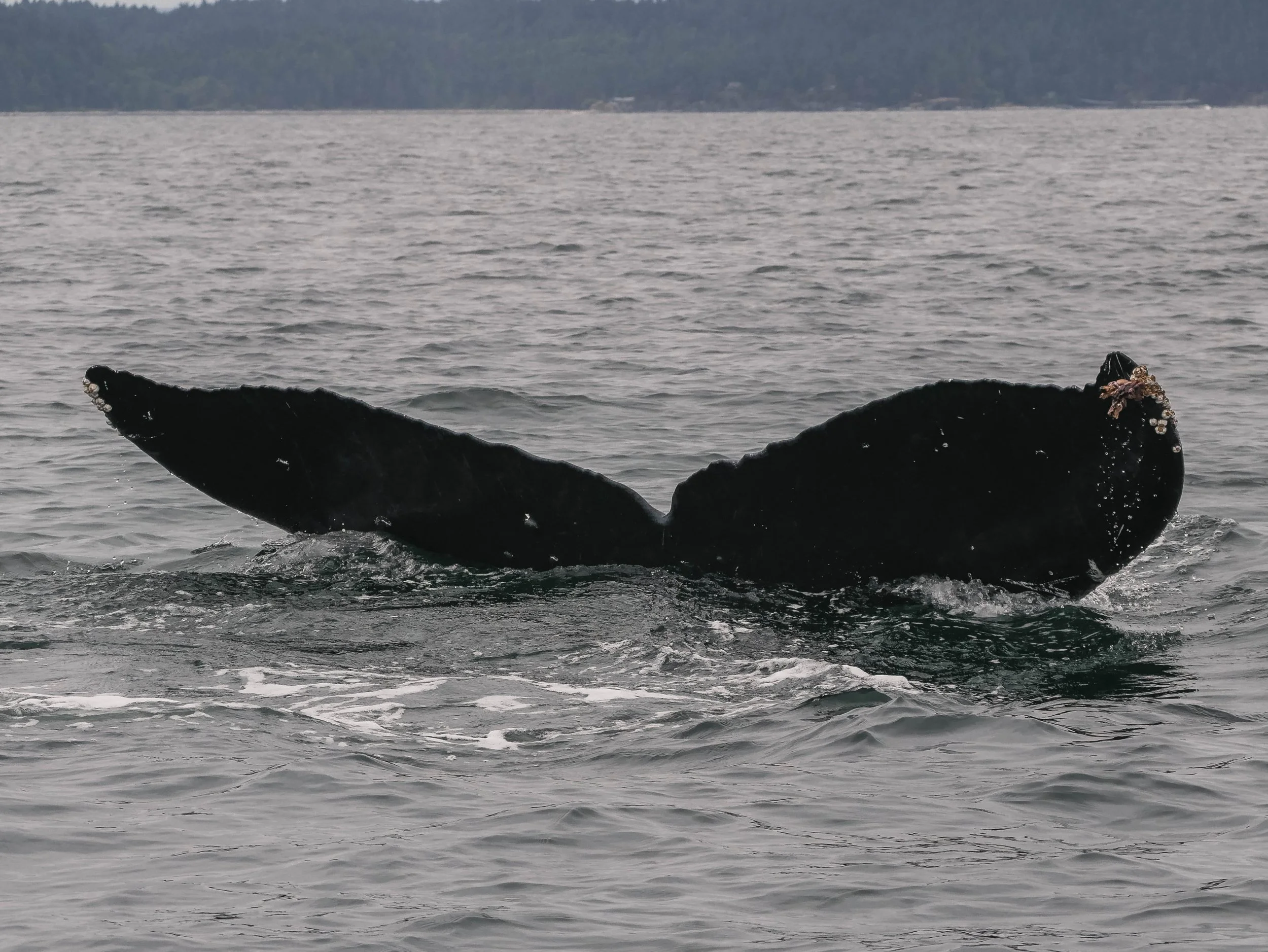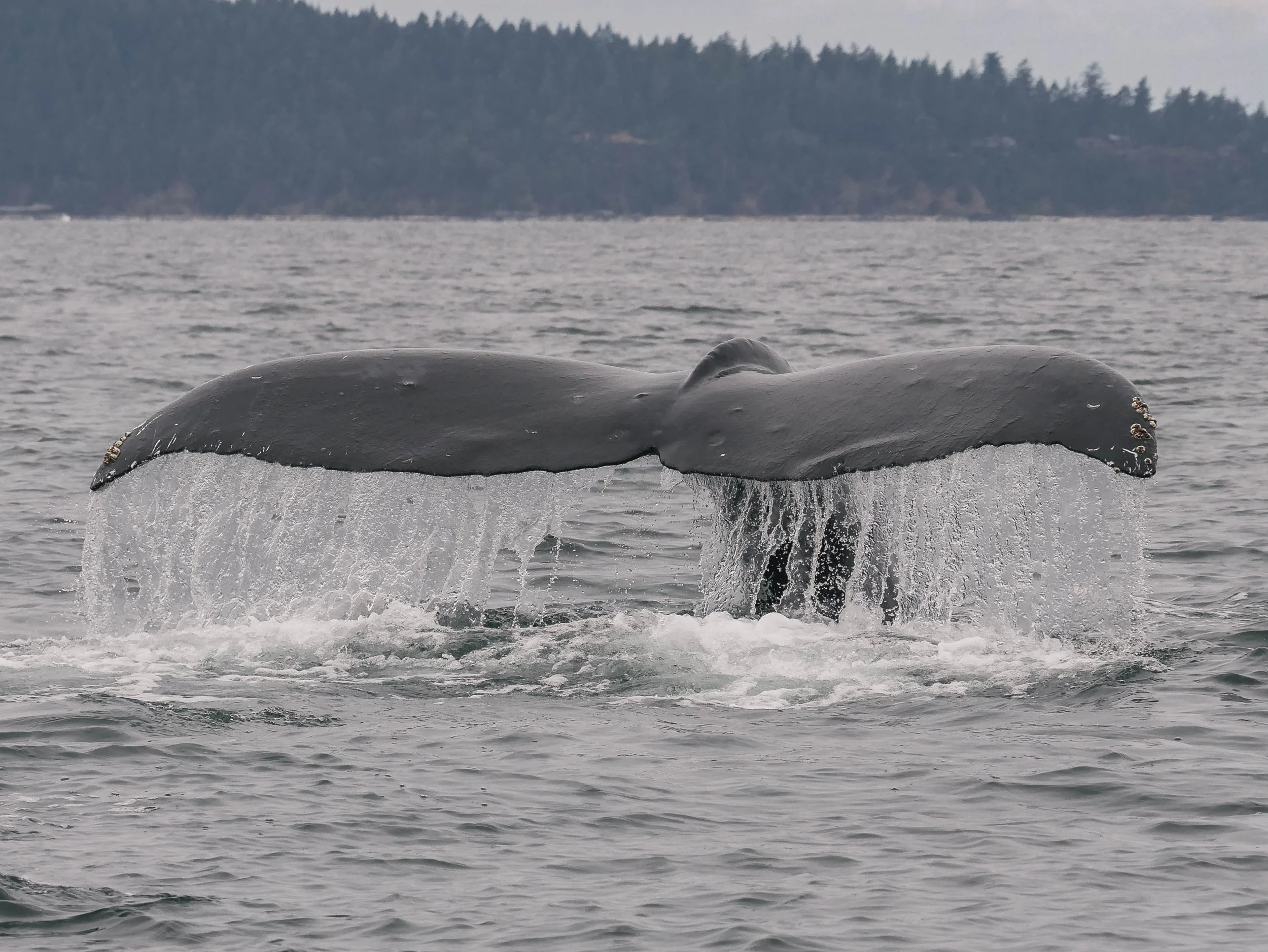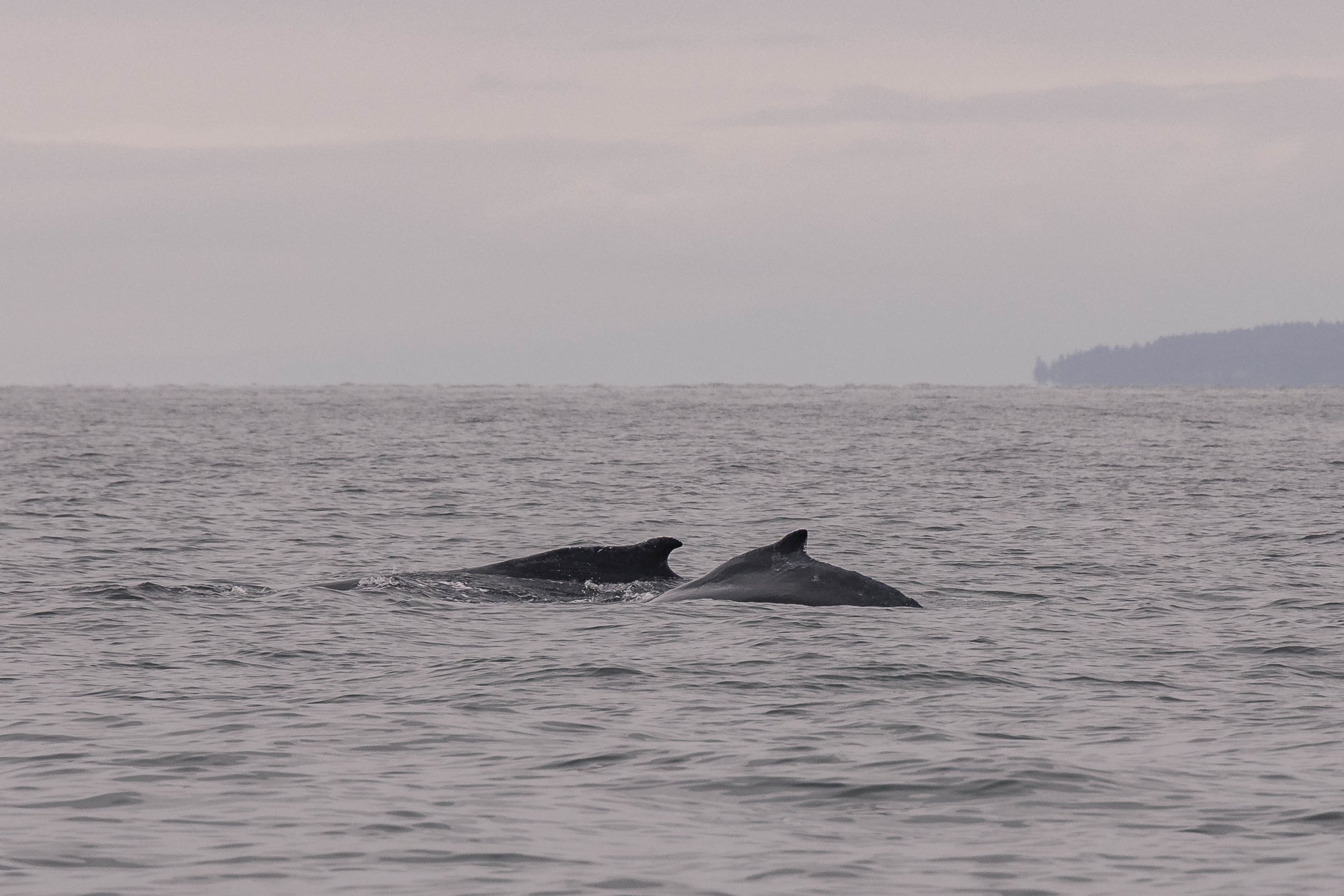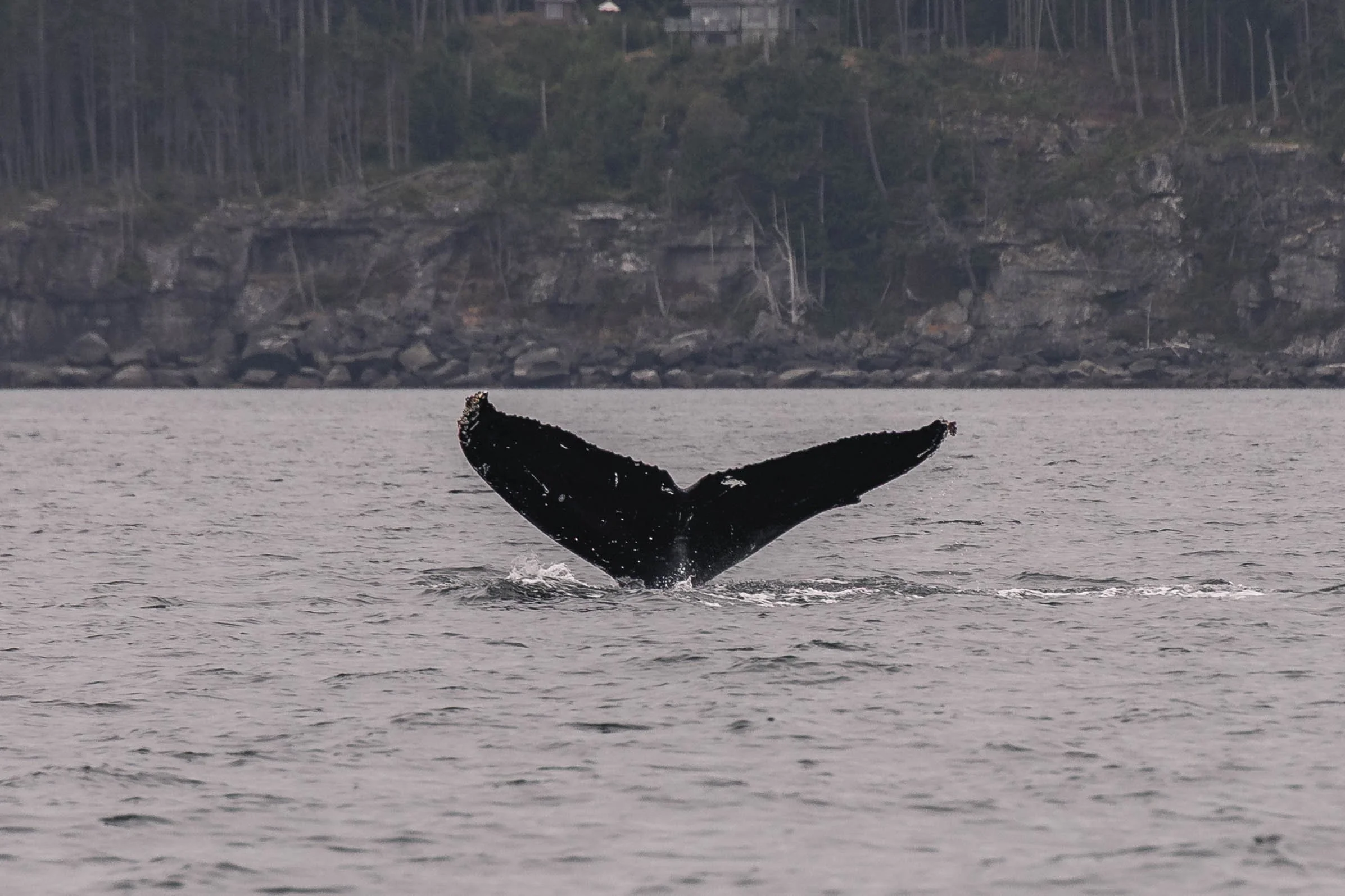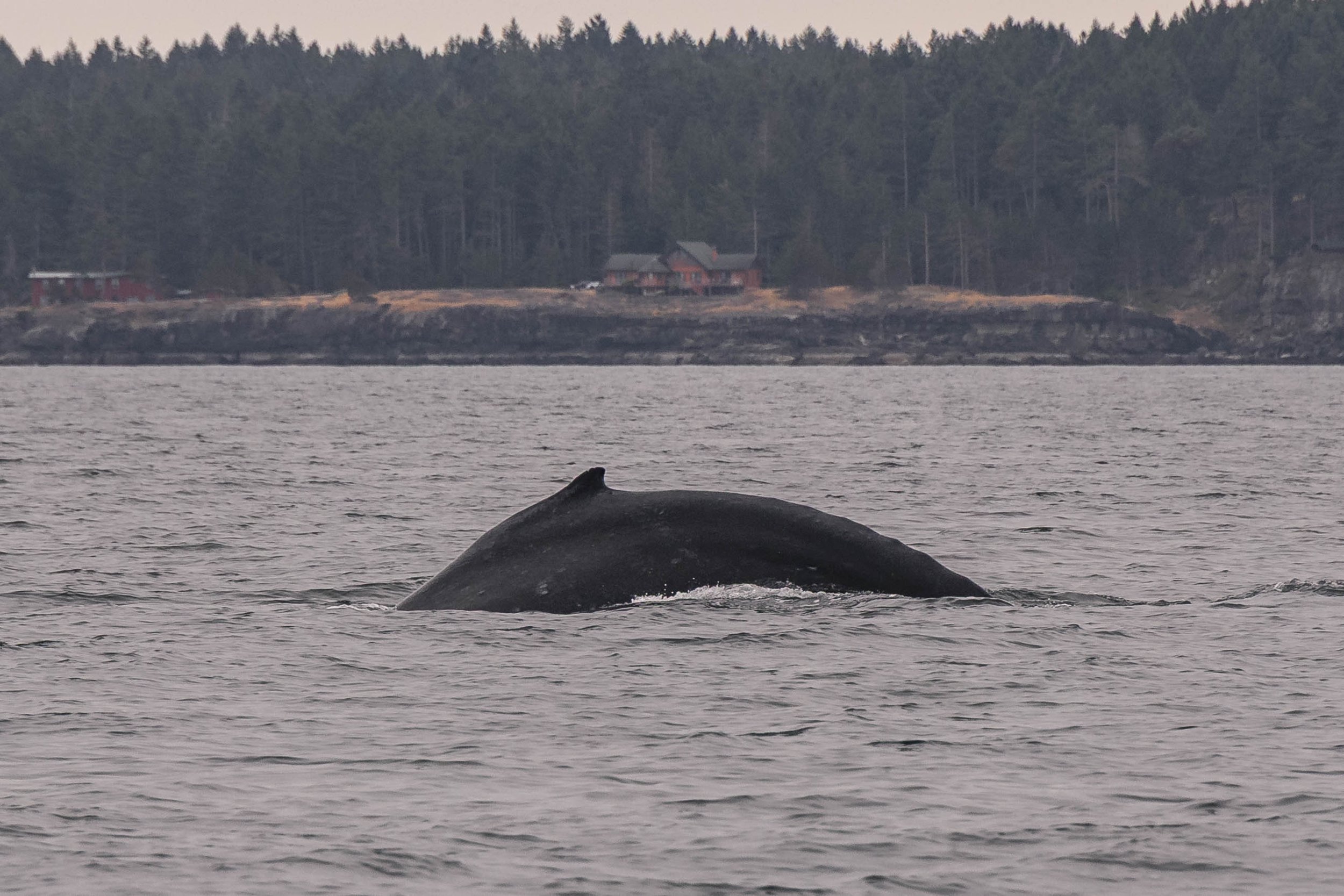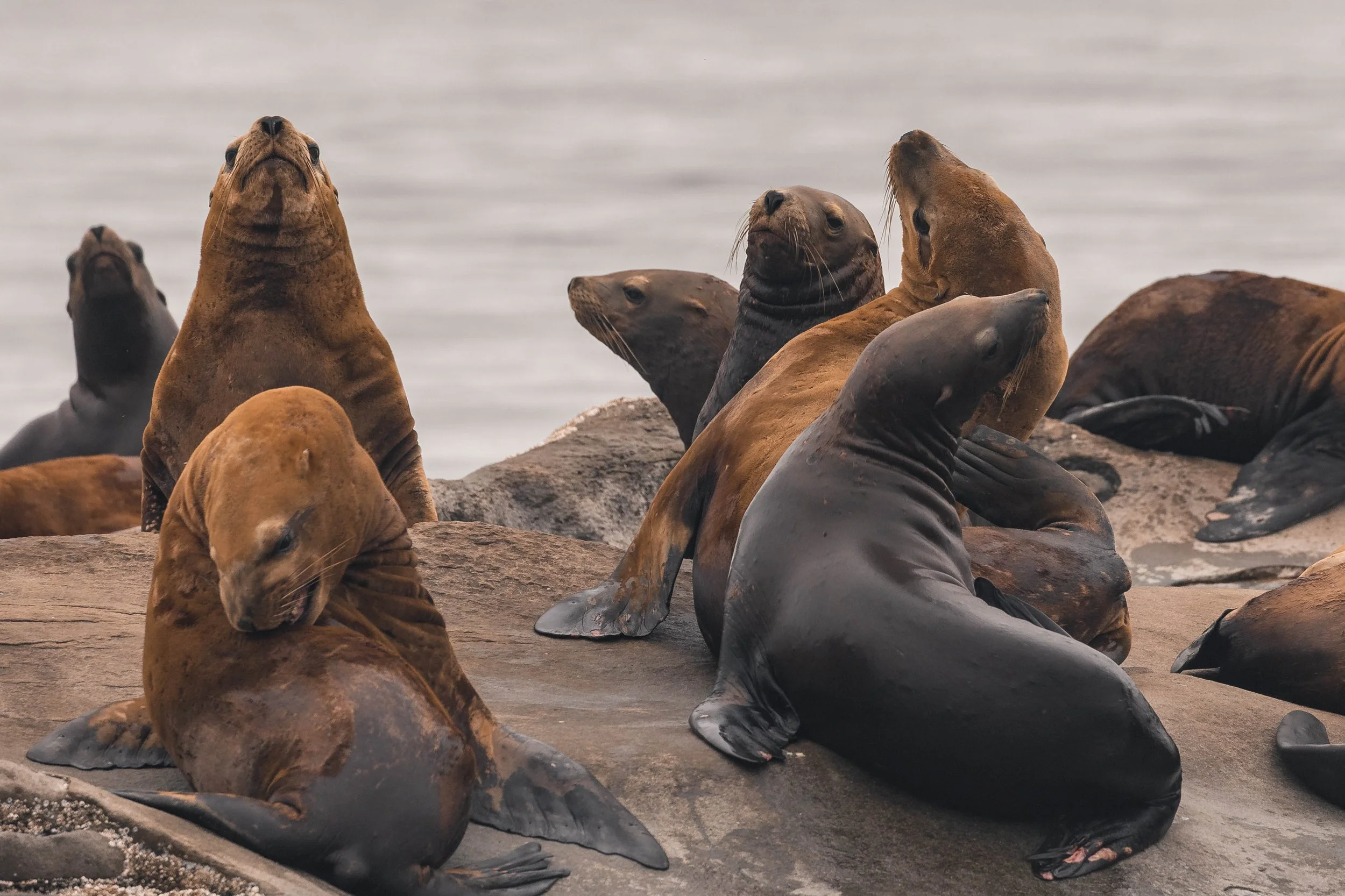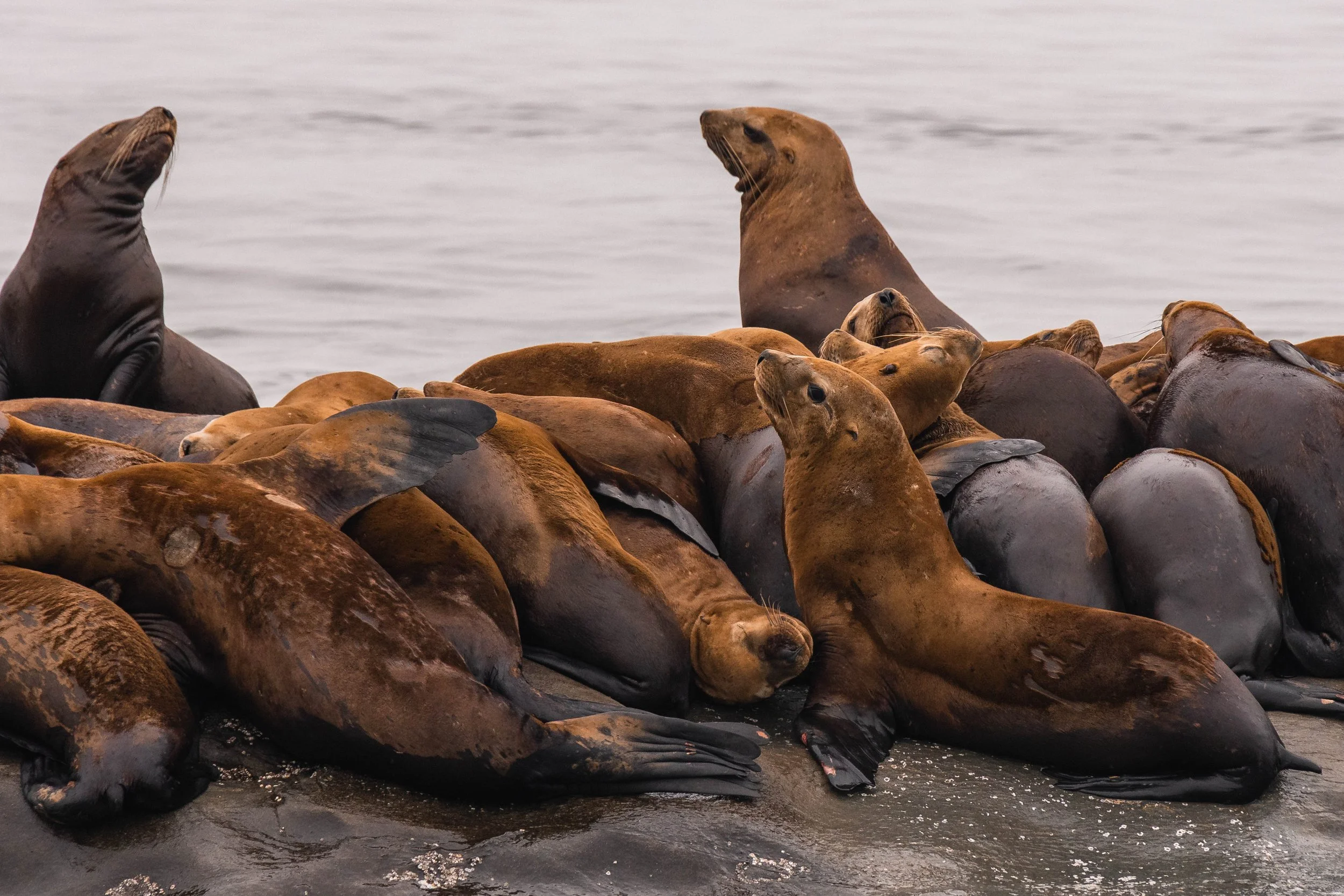August 3, 2025, 10:30 AM - A decade of humpbacks in the SOG!
This morning, the whole fleet slipped off the dock with calm seas, and the sun was slowly warming the day. We cruised out into the Strait of Georgia, scanning the horizon for those telltale blows. The still water provides perfect whale-spotting conditions.
It didn’t take long before our patience paid off. Not one, not two, but TEN individual humpback whales surfaced around us throughout the morning. Only a few years ago, this would have been unheard of. In fact, up until about four years ago, it was widely believed that humpbacks were mostly solitary animals, only coming together briefly for breeding or feeding events. Now, sightings involving multiple humpbacks sharing the same general area are becoming increasingly common. This area of the Strait, just off the coast of Gabriola, has been a bit of a hot spot for feeding recently!
So what’s changed? During the height of industrial whaling in the Pacific Northwest, humpback populations here were pushed to the brink, with tens of thousands taken from these waters in the 20th century. By the late 1960s, their numbers had collapsed. Once commercial whaling was banned, recovery was slow but steady. And now, decades later, we’re witnessing a remarkable rebound. As their population grows, more whales are returning to these historically rich feeding grounds, and we’re seeing the social side of humpbacks like never before. Today was a great example of this, with multiple pairs of humpbacks socializing together. Two of these pairs were Vanta (BCX1730) and Seabird (BCX1774), and Squirrel/Smoke (BCX2183) with Professor X (BCX1965). Both pairs seemed pretty glued to each other, surfacing in tandem and trumpeting.
This area of the Strait, just off the coast of Gabriola, has been a bit of a hot spot for feeding recently! When the Humpbacks are feeding, their dive times can vary significantly, and we saw that today! The longest a Humpback can dive is about 45 mins, typically seen during these longer feeding sessions. Some of the whales today were filling their bellies, and dive times varied. We saw many blows on tour, a clear sign of a good feeding ground! Two of these whales were Crater/Mensa (BCX1565) and Twinning (BCX1207), who were both more preoccupied with feeding than with spending time with others. We carried on and found more nearby!
Among today’s ten whales were two calves travelling with their mothers. Our cow/calf pairs were Smiley (BCY0995) and her BCY0995 calf 2025, and Kappa (BCX0158) and her BCX0158 calf 2025. These little ones (though “little” is relative when you’re born at around 10 feet long and weighing up to a ton!) will stay with mom anywhere from five months to a year. They nurse on rich, fatty milk that helps them double in size before their first migration. While some calves venture out on their own before they’re even a year old, others stick close to mom until they’re ready to take on the ocean solo. Watching them surface alongside their mothers this morning was a reminder of just how important these waters are for nurturing the next generation.
After such an incredible run-in with the humpbacks, we turned our attention to the other wildlife of the Strait. Steller sea lions, the largest sea lions in the world, were sprawled across the rocky haul-outs, bellowing and posturing. Adult males can weigh over a ton, making them the heavyweights of our local pinniped population. Nearby, harbour seals, smaller and more rounded, usually under 200 pounds, lounged in their own sun-soaked clusters. While their personalities couldn’t be more different, both species are often found in large groups along the coastline, using the rocks as safe resting spots between feeding forays.
With the day’s sightings replaying in our minds, we began the journey back to the dock. Ten humpbacks, two calves, countless Steller sea lions, and a host of harbour seals, it’s mornings like this that remind us how alive the Strait of Georgia truly is.
Marine Naturalists Hayleigh Hilbert, Desarae Poier, and Jordan Robinson took all photos from the day.
A breach in the distance. Photo by Jordan Robinson.
Gearing up for a chin slap. Photo by Jordan Robinson.
Twinning fluking. Photo by Desarae Poier.
Seabird fluking. Photo by Desarae Poier.
Vanta’s dorsal fin. Photo by Desarae Poier.
A fluke waterfall! Photo by Desarae Poier.
Smoke preparing to dive. Photo by Desarae Poier.
Smoke’s dorsal fin. Photo by Desarae Poier.
A great look at Smoke’s tail. Photo by Desarae Poier.
Kappa and her calf. Photo by Desarae Poier.
Smoke with another chin slapping beside them. Photo by Desarae Poier.
Splash! Photo by Desarae Poier.
Crater’s dorsal fin. Photo by Hayleigh Hilbert.
Crater surfacing. Photo by Hayleigh Hilbert.
Check out those blow holes! Photo by Hayleigh Hilbert.
Seabird going down. Photo by Hayleigh Hilbert.
Vanta arching to dive. Photo by Hayleigh Hilbert.
Smoke’s dorsal. Photo by Hayleigh Hilbert.
Professor X fluking. Photo by Hayleigh Hilbert.
A waterfall from Smoke. Photo by Hayleigh Hilbert.
Smoke’s tail. Photo by Hayleigh Hilbert.
Kappa fluking. Photo by Hayleigh Hilbert.
Kappa’s calf fluking like mom. Photo by Hayleigh Hilbert.
Smiley and her calf. Photo by Jordan Robinson.
Seabird going down. Photo by Jordan Robinson.
Smoke diving. Photo by Jordan Robinson.
Smoke’s fluke photobombed by a blow. Photo by Jordan Robinson.
Professor X’s dorsal fin. Photo by Jordan Robinson.
Professor X with another in tow. Photo by Jordan Robinson.
A harbour seal in the shallows. Photo by Desarae Poier.
A mom and pup on the shore. Photo by Desarae Poier.
A round harbour seal napping. Photo by Hayleigh Hilbert.
Steller Sea Lions on the rocks. Photo by Desarae Poier.
A cuddle puddle. Photo by Jordan Robinson.
A chubby Steller Sea Lion. Photo by Desarae Poier.
Turkey vultures on the rocks. Photo by Desarae Poier.
A cormorant at the Bluffs. Photo by Jordan Robinson.


